Ukrainian Energy Independence: A Strategy for the Future
Denys Kostrzhevskyi, Chairman of the Board of Directors, Kyiv International Airport
Ukrainian Energy: The Challenges of War
Ukraine has become the center of a global discussion on energy independence. The war, now in its third year, has not only turned our country into a battlefield but has also forced a radical reconsideration of Ukraine’s energy security. Russian attacks on energy infrastructure are not just attempts to halt economic activity but a strategic tool aimed at the destruction of our country.
In the first half of 2024, losses to the energy infrastructure from Russian shelling exceeded those we suffered in 2022-2023. Massive attacks on energy infrastructure began in March, and within the first two weeks, 6 GW of generating capacity was lost—equivalent to the output of the Zaporizhzhia nuclear power plant, which has been under Russian control since the early days of the invasion. By the end of June, losses had exceeded 9 GW, which accounts for nearly half of the country’s total energy capacity. We lost 80% of maneuverable generation, two hydropower plants were disabled, and only 27% of thermal power plants remain operational (RBC publication).
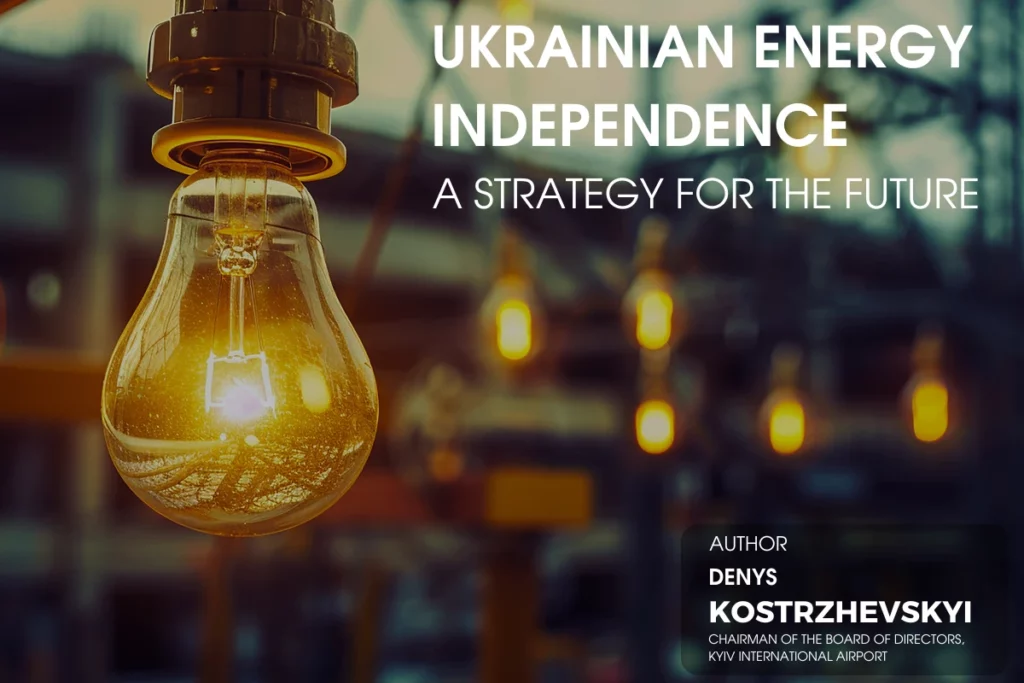
Denys Kostrzhevskyi Ukrainian Energy Independence
In these circumstances, the development of renewable energy sources is no longer just a future prospect but a critical necessity. The western regions, far from the active combat zones, have become a reliable foundation for the restoration and development of new energy projects. In 2024, we have already installed 1 GW of new solar and wind capacity, primarily in the western regions such as Lviv and Zakarpattia.
However, the restoration of damaged energy facilities remains a complex task, particularly due to the lack of equipment. Negotiations are ongoing with international partners like Lithuania and Germany to transfer equipment from their decommissioned thermal power plants (TPPs). Yet, even after the facilities are restored, there remains a high risk of repeated attacks—Russia has repeatedly targeted restored TPPs, making this path risky.
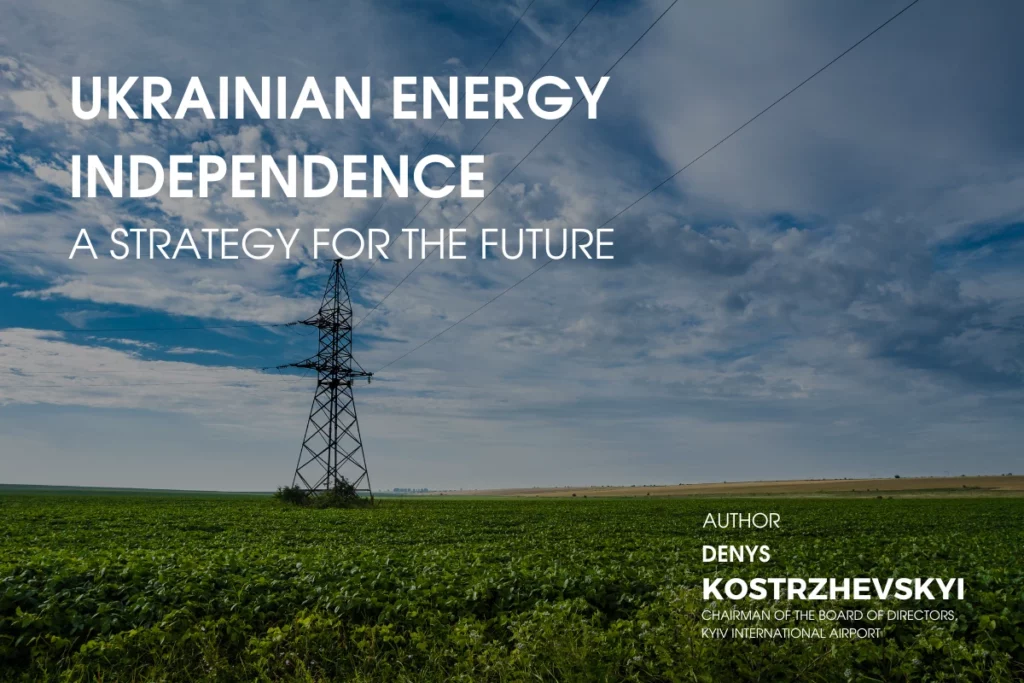
Despite these challenges, I firmly believe that Ukraine has ambitious plans. By the end of this year, Ukraine plans to build 1 GW of maneuverable thermal generation, with plans to increase this capacity by an additional 4 GW in the coming years. This is an important part of our strategy to stabilize the energy system amid the ongoing war.
Nonetheless, restoring capacity requires significant financial resources. According to estimates from DTEK, approximately USD 350 million is needed to recover from the damage caused by attacks on TPPs. Another USD 1.5 billion has been earmarked for emergency repairs through U.S. support. But attracting other sources of funding remains problematic due to the high risks of investing in recovery projects during the war.
Another avenue for stabilization is the development of distributed generation—gas turbine and gas engine power plants, as well as further development of solar energy. However, the prospects remain limited: even with the installation of small generation capacities, Ukraine can gain no more than an additional 1.5 GW of energy. By the fall of 2024, available gas reserves are expected to reach 13 billion cubic meters, which will be sufficient to operate new installations.
Thus, the main obstacles to Ukraine’s energy independence remain high financial costs, limited resources, and the constant threat of new attacks on restored facilities. Optimistic forecasts for energy generation recovery suggest the possibility of partially compensating for the losses, but even in the best-case scenario, we will be able to restore up to 2 GW of destroyed generation by the end of the year. Plans are also in place to commission 1.5 GW of distributed generation and 1 GW from individual solar stations.
However, even under the most optimistic scenario, electricity shortages could remain significant—up to 20-30% in the network and up to 40% for residential consumers. This means that most Ukrainians may face regular power outages throughout the day, especially considering the risk of new attacks on energy infrastructure.
Protecting nuclear power plants remains one of our top priorities, but guaranteeing their complete safety is impossible. A large-scale blackout could become a reality if one of the nuclear power plants loses the ability to produce or transmit electricity to the general grid.
Therefore, I believe we must develop decentralized generation. This will reduce reliance on large energy facilities and increase the resilience of our energy system to attacks. Despite all the challenges, I am convinced that Ukraine will overcome these difficulties and build a resilient, modern energy infrastructure.
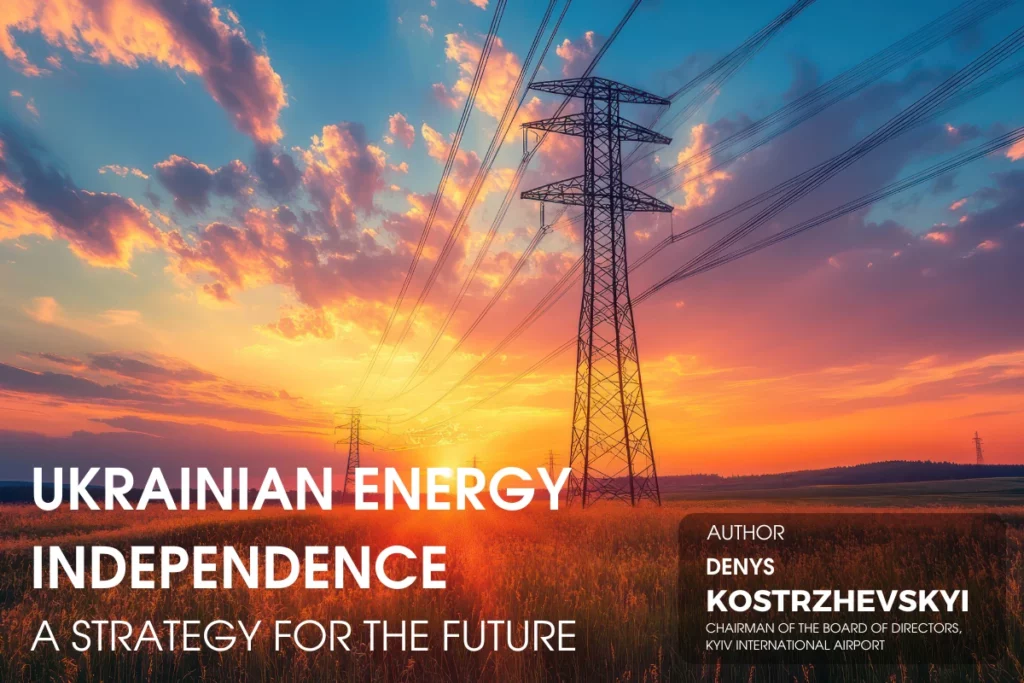
Restoring Ukraine’s Energy Independence
Ukraine faces unique challenges in the energy sector, but I am confident that our path to energy independence is realistic and achievable. Now, more than ever, it is important not only to focus on restoring damaged facilities but also to think strategically—about the future. We must use this crisis as an opportunity to build a new, more resilient, and decentralized energy system.
First, we must focus on decentralizing energy. Large central facilities are vulnerable to attacks, but distributed generation is the way to ensure continuous operation. New gas turbine and solar power plants will help mitigate risks by increasing the resilience of our grid.
Second, the development of renewable energy is not just an environmental choice—it is a necessity of our time. The western regions of the country are already leading in this direction, and I propose continuing to support their drive toward energy independence through solar and wind projects.
Third, we must invest in modern energy storage technologies. This will allow us to smooth out peak loads on the grid and ensure stability even in challenging conditions. Energy storage systems are our key to a stable power supply for every Ukrainian.
The fourth direction is international cooperation. Ukraine has already received substantial assistance from our partners, but I am confident that these projects can be expanded. Attracting international funding and transferring technology and equipment will enable us to restore our energy infrastructure more quickly.
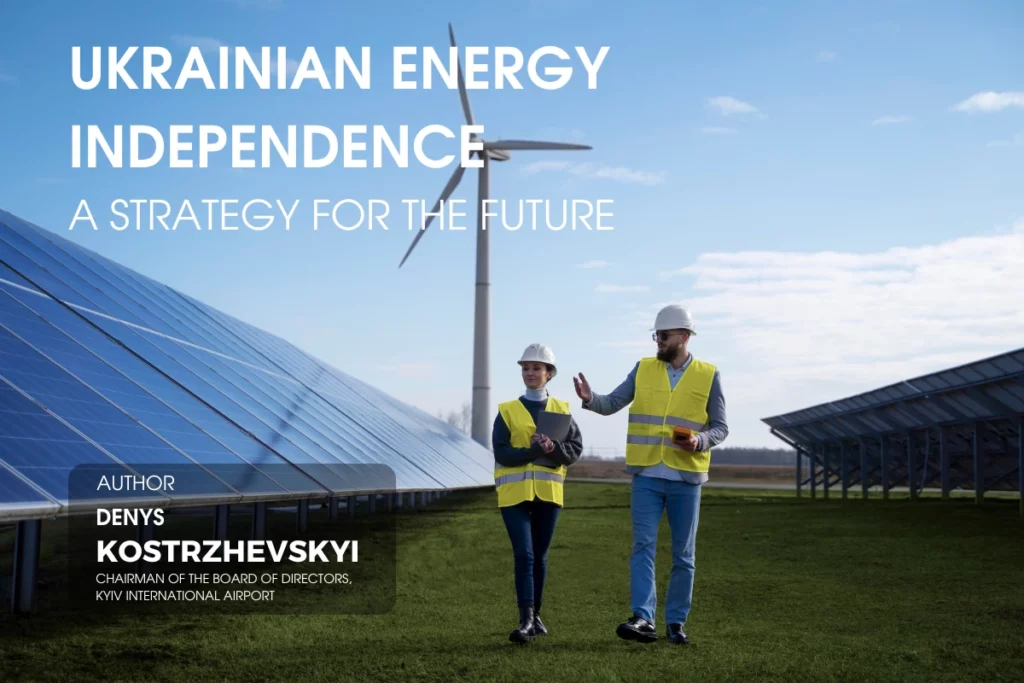
State Support for the Development of Ukraine’s Energy Independence
To achieve energy independence, Ukraine needs a comprehensive state support program that will encompass all aspects of energy development—from infrastructure to financial incentives for businesses and citizens. Here are the key areas where the state can effectively contribute.
- Developing a national energy efficiency strategy. Ukraine must develop a strategy that addresses all sectors of the economy: industry, the residential sector, transport, and utilities. This will significantly reduce energy consumption, enhance economic resilience to crises, and decrease dependence on energy imports. Specifically, the state should support:
- Modernizing infrastructure and buildings. Programs for insulating homes, replacing windows and doors, and implementing energy consumption control systems will reduce energy costs by 30-50%. It is important to provide tax incentives and subsidies to encourage these measures.
- Transitioning to energy-efficient equipment. For businesses, this means upgrading production lines and adopting low-energy equipment. For residential consumers, it involves replacing outdated appliances with new A++ models. Financial support programs for citizens will be an important incentive.
- Tax incentives for renewable energy development. To stimulate the development of renewable energy sources, such as solar and wind power, the state should introduce tax incentives. This could include VAT exemptions on equipment for solar panels and wind turbines, as well as land incentives for such projects. This will create attractive conditions for both domestic and foreign investors.
- Zero-interest loans for implementing new technologies. A state program of interest-free loans for renewable energy and decentralized generation projects will be a powerful stimulus for businesses. This will enable companies to implement energy-efficient technologies without the burden of high-interest loans.
- Abolishing customs duties and VAT on equipment imports. Ukraine should encourage the installation of renewable energy sources by abolishing customs duties and VAT on equipment for alternative energy. This will significantly lower barriers for investors looking to install solar panels, wind turbines, or energy storage systems.
- Encouraging the production of equipment in Ukraine. Investing in the production of renewable energy equipment within Ukraine is another important step toward energy independence. The state should create favorable conditions for the establishment of factories producing solar panels, wind turbines, batteries, and other equipment. This will not only create new jobs but also raise the country’s technological level.
- Stimulating investment in research and development. Ukraine must invest in scientific research in renewable energy and energy storage. State support in the form of grants or tax breaks for companies developing cutting-edge technologies will drive innovation and position Ukraine as a leader in renewable energy.
- Developing informational campaigns. The government should actively inform the public about the benefits of energy efficiency through educational programs and awareness campaigns. Raising public awareness about energy-saving methods will promote more effective implementation of measures.
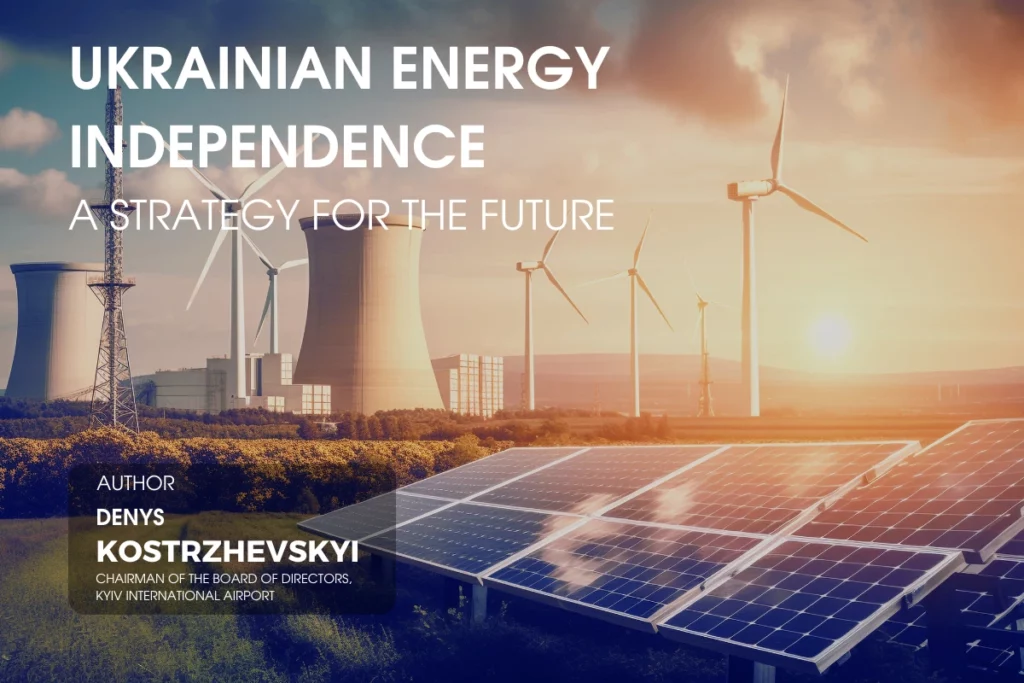
The Path to Energy Independence: A Step Forward is Needed
I am convinced that Ukraine has all the necessary resources and opportunities to achieve energy independence, despite the enormous challenges we face due to the war. We stand on the threshold of a new era in the energy sector, and now, more than ever, we need determination, strategic thinking, and active cooperation at all levels.
I firmly believe that we can build a new energy system based on practical steps already taken. The development of decentralized generation and renewable energy sources is not just our future—it is our urgent need. I am strongly convinced that we must maximize the potential of the western regions to expand solar and wind energy projects, which have already proven effective.
Every step on the path to energy independence must be supported by the state. I am confident that tax incentives, interest-free loans, and infrastructure modernization programs can accelerate our progress. We must encourage local production of energy equipment, which will help not only reduce costs but also create new jobs.
I am certain that international cooperation and the introduction of advanced technologies will help us restore the damaged infrastructure more quickly and ensure energy resilience.
